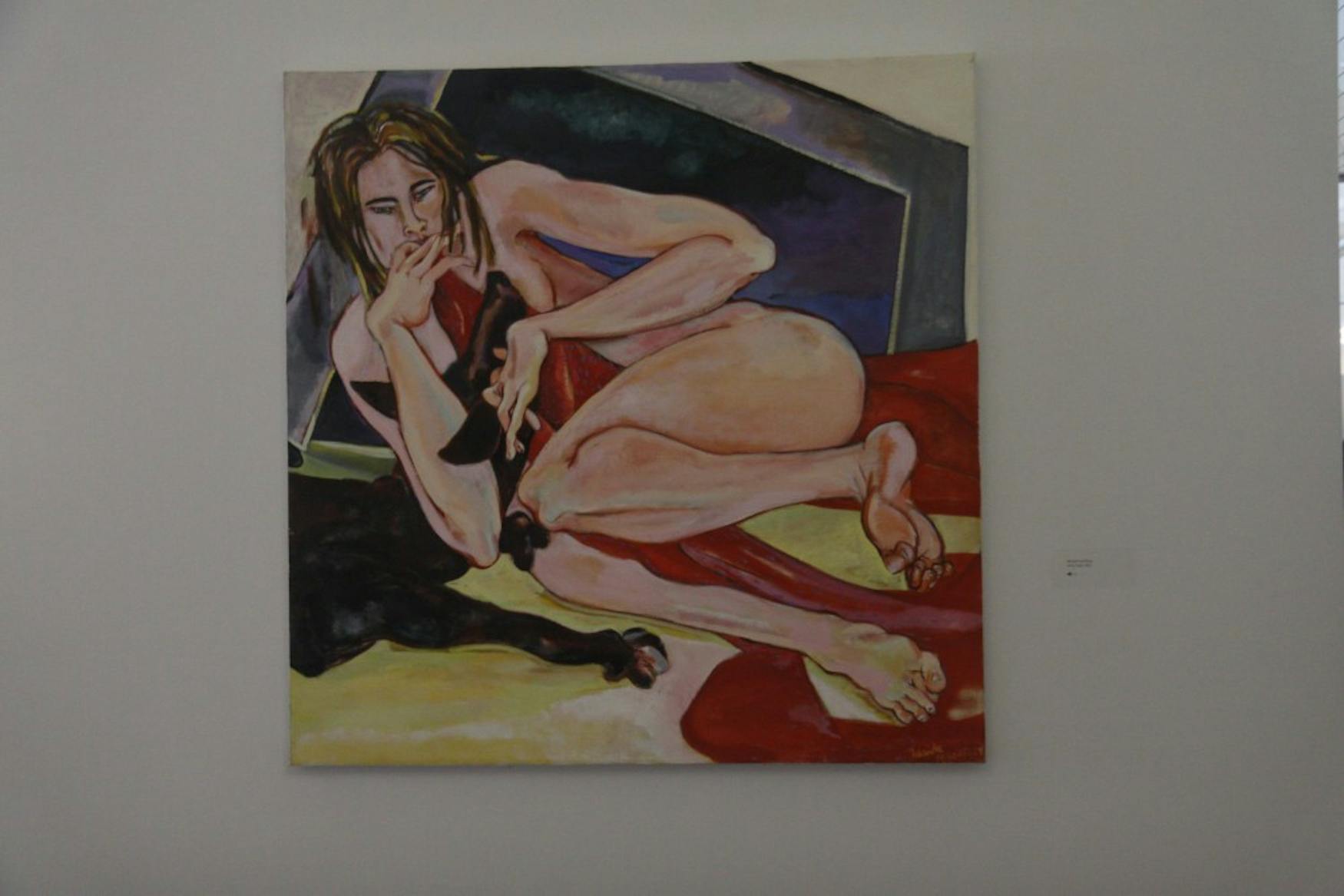WSRC portrays the female experience
Currently on view at the Women’s Studies Research Center’s Kniznick Gallery, Juanita McNeely: Indomitable Spirit, represents “a woman’s life from a woman’s point of view,” as the artist says in her audio introduction to the exhibition.
Creating artwork in New York during the second wave of feminism in the late 1960s, McNeely does not hold back in her depictions of women. She shows extremely private and rarely talked about aspects of the female experience—depicting women both in the nude and giving birth, and images of menstruation and sexual encounters. McNeely does not view her artwork as sexualized, however. At least, she says, that’s not her purpose.
The exhibit is curated by Susan Metrican, the director of the Kniznick Gallery, who told the Justice that the selection of the artist had actually been the work of her predecessor, Michele L’Heureux, who worked with the artist for over a year to get the exhibit in place.
According to Metrican, L’Heureux had initially wanted to choose a selection of works that represented a survey of McNeely’s 40 years of work.
But Metrican took a different approach when she visited the studio to discuss the pieces with the artist. “When I visited her studio, Juanita and I looked at the work again, and we chose different works that I felt would fit more cohesively as an exhibition. I also wanted the work to speak to the title Indomitable Spirit, so each piece that we chose, I feel relates to that in its own way,” she said in an email to the Justice.
Walking into the gallery, paintings and painted vases of women’s nude bodies cover the space. Through her portrayals of women contorted and restrained in various shapes (some of which look painful), McNeely creates a very graphic experience for the viewer. The assortment of paintings and vases all take on the task of portraying women at different stages of their lives.
But even with portrayals of these women in painful positions, streaming blood and forced into small spaces, the paintings are beautiful in their own right. McNeely uses vibrant colors—pinks, yellows, blues and greens—and sometimes reds when blood is involved in a piece. The contorted bodies and their vibrant, geometric environments resemble Pablo Picasso’s work. The Spanish cubist also dealt with contorted forms of women, using surreal imagery to in fact bring out the real in his paintings.
Along with each work, there is a corresponding number listed beside it that provides an extension to dial on your phone for a guided tour of the pieces. The numbers link to McNeely herself, speaking about the pieces—sometimes speaking about her inspiration, sometimes speaking about her process and sometimes speaking generally about her form.
“I learned that Juanita wouldn’t be able to travel to the exhibition and after speaking with her, I realized it was important that her voice be heard somehow,” wrote Metrican in an email to the Justice, “Juanita has great stories, so it was great to hear her speak about her experiences in the 60s and 70s when making some of the work in the show.”
The largest piece in the exhibit, “From the Black Space” is a three-paneled piece that stretches 84 by 332 inches. On an expanse of whiteness, floating figures span the white canvas. In the audio recording that goes along with the painting, McNeely notes that the central image is a semblance of a homeless woman she saw on the street. The woman, who had presumably gone insane, was sitting with a baby doll strapped around her waist. In the audio recording, McNeely guided the viewer through each of the figures that spanned the painting. She talks about how the piece represents a story of loss. Starting with a miscarriage, McNeely takes the viewer through images of insanity, of losing control of her body and mind to inevitable death.
One of her smaller pieces, on a medium-sized canvas, “Birth” is intensely graphic but still vibrant. The painting depicts a woman lying in the center of circular folds inscribed within one another. The folds engender an image of a vaginal cavity—creating a strictly feminine space in which the woman is lying to give birth. Within these folds, a woman lies, legs open wide, giving birth to a faceless creature clawing its way out of her vagina. Multicolored strokes shape the very texture of the painting.
The exhibit is something you would see at a world-renowned museum. Not only is the artwork spectacular to look at as well as thought provoking, but the audio recordings that go along with each of the works give the visitor invaluable insight into the thoughts of the artist.
Juanita McNeely: Indominable Spirit will be on view until Oct. 8, and Sharyn Finnegan, a colleague of McNeely will be lecturing on the artist’s work on Thursday, Sept. 18 in the WSRC.



Please note All comments are eligible for publication in The Justice.